 With the GGC-MUSC membership agreement finalized earlier this year, several working groups have begun addressing joint initiatives between the two organizations. Under the initial plan of the membership agreement, five working groups have been established with joint leadership and membership from both GGC and MUSC.
With the GGC-MUSC membership agreement finalized earlier this year, several working groups have begun addressing joint initiatives between the two organizations. Under the initial plan of the membership agreement, five working groups have been established with joint leadership and membership from both GGC and MUSC.
“The initial stages of these working groups have been productive, and we are working to build relationships and strengthen connections across the GGC and MUSC,” said Steve Skinner, MD, Director of GGC. “We are excited about the progress and plans of each group to improve access to genetics care for patients and families across SC and to strengthen both of our organizations.”
Workgroup A, led from GGC by Mike Lyons, MD, Director of Clinical Services, is tasked with increasing access to genetics services. This group’s initial goals are focused on improving access to care by coordinating referrals and appointments, more efficient use of genetic counselors, and expanding the use of telemedicine, including eConsults and eVisits. This workgroup is also coordinating workforce recruitment and utilization across both institutions.
Workgroup B, led from GGC by Mike Friez, PhD, Director of GGC’s Diagnostic Laboratories, is working toward aligning and optimizing laboratory testing with the goal of retaining genetic testing in SC by increasing laboratory referrals to GGC and improving patient and provider access to genetic testing at both institutions. This workgroup is working to reduce the costs of genetic testing and improve the ease of ordering testing for providers.
Dr. Friez also leads Workgroup C which is tasked with investing in innovative approaches to clinical delivery, genetic testing, and research. This team is driving collaboration to strengthen the use of shared technologies and key expertise, as well as developing new tests and products to support patient care.
Workgroup D, headed by Paul Pridmore, GGC’s Chief Operating Officer (COO), seeks to optimize processes such as electronic medical records, reporting capabilities, billing, and other supportive processes to increase efficiencies and decrease costs. Kevin Farren, GGC’s Director of Data Integration and Management, is leading the effort from GGC to integrate electronic medical records and laboratory information management, a critical first step in increasing efficiencies in genetic services.
Workgroup E consists of the Joint Operating Committee which includes Skinner, Pridmore, and Brandi Buff, GGC’s Chief Financial Officer (CFO), along with MUSC Health’s CEO, Pat Cawley, MD; CFO, Lisa Goodlett; and COO, Tom Crawford, PhD. This committee is tasked with providing resources and operational support to enable the success of the workgroups and to ensure the sustainability of the initiatives from the workgroups.
“Throughout the early months of our work together, we have seen wonderful collaborations between GGC and MUSC faculty and among our newly-appointed board members,” added Skinner. “The possibilities for the growth and improvement of genetics services are significant, and patients and families across SC will reap the greatest benefits.”
Photo: First meeting of the new GGC Board of Directors L-R Seated: Dell Baker and Holisa Wharton, PhD; Standing Chris Przirembel, PhD, Steve Skinner, MD, Jay Nexsen, Charles Schulze, John Miller, Bill Stevens, Howell Clyborne, Terri Barnes, and Pat Cawley, MD. Not pictured (joined virtually) Fritz Butehorn, MD, Richard Christian, MD, and Reid Conrad.

 The Division of Research at GGC is tasked with asking, and then answering, some of the most challenging questions in biology.
The Division of Research at GGC is tasked with asking, and then answering, some of the most challenging questions in biology.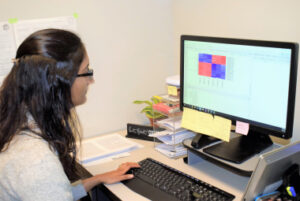 “Our colleagues at UGA looked at the metabolomic profile which is basically a large-scale study of all of the small molecules or metabolites with the cell,” said Steet. “What we found is that the defective enzyme was affecting numerous metabolic pathways that had not been identified in prior studies.”
“Our colleagues at UGA looked at the metabolomic profile which is basically a large-scale study of all of the small molecules or metabolites with the cell,” said Steet. “What we found is that the defective enzyme was affecting numerous metabolic pathways that had not been identified in prior studies.”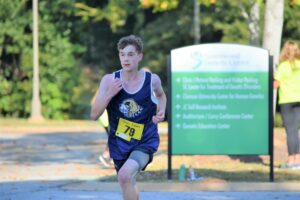 JT Shorter loves to run.
JT Shorter loves to run. One of the presenting sponsors, Bionano, a provider of genome analysis solutions based in San Diego not only sponsored the race, but they also held their own Race the Helix event in California for employees to participate together. Bionano President and CEO, Erik Holmlin, PhD, and Chief Medical Officer, Alka Chaubey, PhD, even flew to Greenwood to participate in person with Holmlin winning his age group.
One of the presenting sponsors, Bionano, a provider of genome analysis solutions based in San Diego not only sponsored the race, but they also held their own Race the Helix event in California for employees to participate together. Bionano President and CEO, Erik Holmlin, PhD, and Chief Medical Officer, Alka Chaubey, PhD, even flew to Greenwood to participate in person with Holmlin winning his age group.
 Nicole painted twelve flowers with two different types of genetic alterations – the double flower and phyllody.
Nicole painted twelve flowers with two different types of genetic alterations – the double flower and phyllody.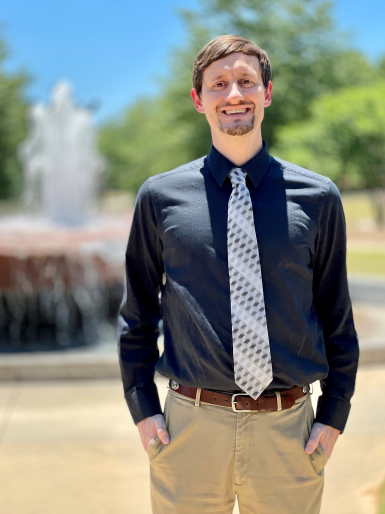
 Patterson and his PA colleague,
Patterson and his PA colleague, 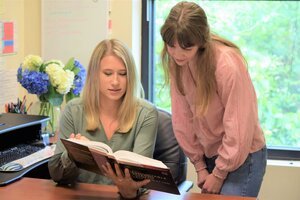


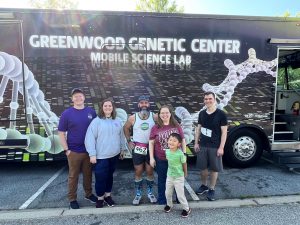
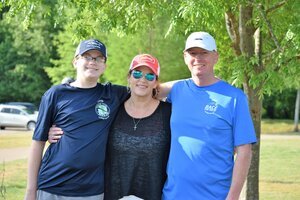
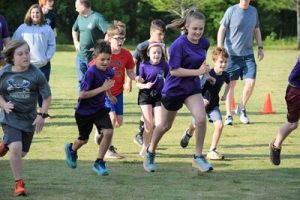

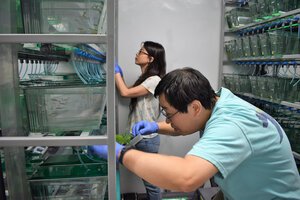

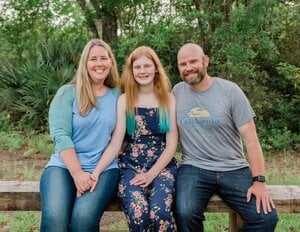
 “The cholesterol storage in both the patient and zebrafish cells suggested that treatments targeting cholesterol accumulation could be therapeutic,” said Steet. “When we treated the affected zebrafish with the drug, 2-hydroxypropyl-beta-cyclodextrin, the fish showed reduced cholesterol accumulation and significant improvement in swimming behaviors.”
“The cholesterol storage in both the patient and zebrafish cells suggested that treatments targeting cholesterol accumulation could be therapeutic,” said Steet. “When we treated the affected zebrafish with the drug, 2-hydroxypropyl-beta-cyclodextrin, the fish showed reduced cholesterol accumulation and significant improvement in swimming behaviors.”


